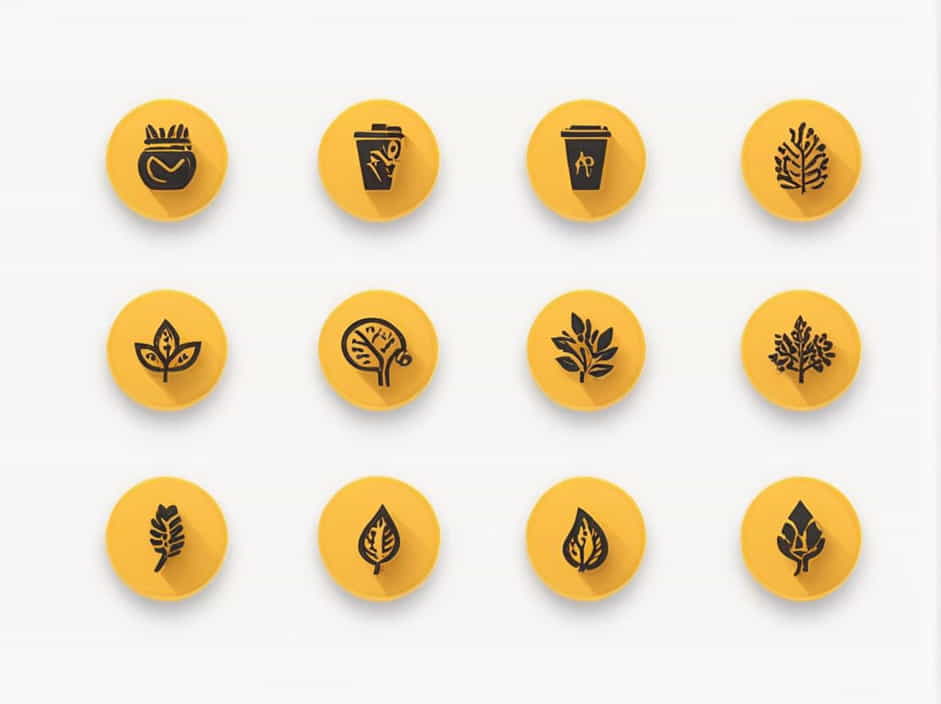Biomass materials are organic substances derived from plants, animals, and other living organisms. They are widely used as a renewable energy source and play a significant role in sustainable energy production. Biomass can be converted into biofuels, electricity, and heat, making it an essential alternative to fossil fuels.
In this topic, we will discuss five common biomass materials:
- Wood and Wood Waste
- Agricultural Residues
- Animal Manure
- Algae
- Municipal Solid Waste (MSW)
Each of these materials contributes to renewable energy production and environmental sustainability.
1. Wood and Wood Waste
What is It?
Wood is one of the most widely used biomass materials. It comes from trees, branches, sawdust, and leftover wood scraps from industries like construction and furniture making. Wood waste includes materials such as:
- Sawdust from lumber mills
- Wood chips from tree pruning
- Bark and branches from forestry activities
How is It Used?
Wood and wood waste are used in multiple ways for energy production:
- Firewood for household heating
- Wood pellets as fuel for stoves and boilers
- Biomass power plants that burn wood to generate electricity
- Charcoal production for cooking and industrial applications
Benefits of Using Wood as Biomass
- Abundant and renewable if managed sustainably
- Reduces landfill waste by utilizing wood scraps
- Lower carbon emissions compared to fossil fuels
2. Agricultural Residues
What is It?
Agricultural residues are leftover plant materials after crops are harvested. These include:
- Corn Stalks and Husks
- Wheat and Rice Straw
- Sugarcane Bagasse (fibrous material left after extracting sugar juice)
How is It Used?
- Biofuel Production: Agricultural residues are converted into ethanol and biodiesel, which are alternative fuels for transportation.
- Biogas Generation: Fermentation of crop residues can produce methane gas for cooking and electricity.
- Animal Bedding and Feed: Some residues, like straw, are used as bedding for livestock or as feed supplements.
Benefits of Using Agricultural Residues
- Reduces waste from farming operations
- Enhances soil fertility when used as compost
- Provides clean energy without harming the environment
3. Animal Manure
What is It?
Animal manure is a natural biomass material produced by livestock such as cows, pigs, chickens, and horses. It is a valuable source of nutrients and energy.
How is It Used?
- Biogas Production: Animal manure is placed in anaerobic digesters, where bacteria break it down and produce methane gas. This gas is used for cooking, heating, and electricity generation.
- Organic Fertilizer: Manure is rich in nitrogen, phosphorus, and potassium, making it an excellent fertilizer for crops.
- Soil Improvement: When composted, it enhances soil moisture retention and microbial activity.
Benefits of Using Animal Manure
- Reduces methane emissions from open manure storage
- Provides a sustainable alternative to chemical fertilizers
- Improves waste management on farms
4. Algae
What is It?
Algae are aquatic plants that grow in freshwater and saltwater environments. They are considered one of the most promising biomass sources due to their high oil content and rapid growth rate.
How is It Used?
- Biofuel Production: Certain algae species produce oils that can be converted into biodiesel.
- Biogas Generation: Algae can be fermented to produce methane for energy.
- Nutritional Supplements: Algae like spirulina and chlorella are used as health supplements due to their high protein and nutrient content.
Benefits of Using Algae as Biomass
- Grows quickly and does not require farmland
- Absorbs CO₂ from the atmosphere
- Produces high-energy biofuels efficiently
5. Municipal Solid Waste (MSW)
What is It?
Municipal solid waste (MSW) consists of biodegradable materials found in everyday household and commercial trash, including:
- Food scraps
- Yard waste (leaves, grass clippings)
- Paper and cardboard
How is It Used?
- Waste-to-Energy Plants: MSW is burned to produce electricity and heat.
- Composting: Organic waste is decomposed to create nutrient-rich compost for agriculture.
- Biogas Production: Landfills with biodegradable waste generate methane, which can be captured and used as an energy source.
Benefits of Using MSW as Biomass
- Reduces landfill waste and pollution
- Generates renewable energy from trash
- Encourages recycling and sustainability
Comparison of Biomass Materials
| Biomass Material | Main Source | Primary Uses | Key Benefits |
|---|---|---|---|
| Wood & Wood Waste | Trees, lumber mills | Firewood, pellets, electricity | Renewable, widely available |
| Agricultural Residues | Crop leftovers | Biofuels, biogas, compost | Reduces farm waste, supports sustainability |
| Animal Manure | Livestock waste | Biogas, fertilizer | Converts waste into energy and nutrients |
| Algae | Water-based plants | Biodiesel, methane gas, supplements | Fast-growing, absorbs CO₂ |
| Municipal Solid Waste (MSW) | Household & commercial waste | Electricity, compost, landfill gas | Reduces landfill pollution, generates energy |
Biomass materials provide sustainable energy solutions that help reduce dependence on fossil fuels. The five materials discussed—wood, agricultural residues, animal manure, algae, and municipal solid waste—play an essential role in renewable energy production and environmental conservation.
By utilizing biomass effectively, we can:
- Lower carbon emissions
- Reduce waste and pollution
- Promote a cleaner and more sustainable future
The shift to biomass energy is crucial in the fight against climate change and the development of renewable energy sources.
